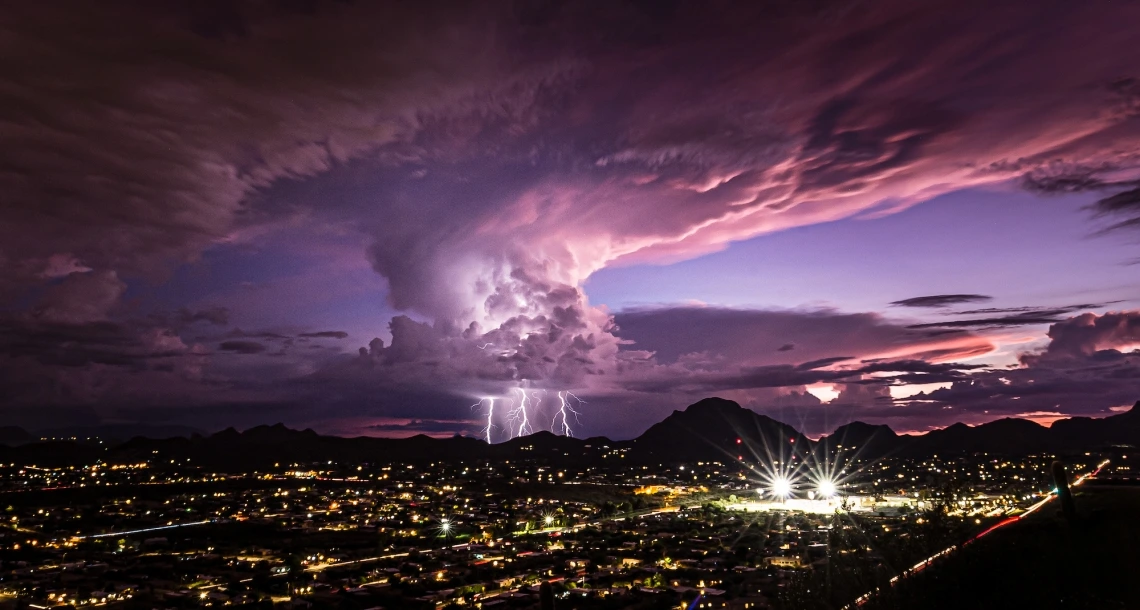Fantasy Monsoon Game Open to Amateur Forecasters for Third Year
Climate researchers at the University of Arizona are crossing their fingers for another wet monsoon.

Tucson's "A" Mountain during a storm in August 2019.
Zack Guido/Arizona Institute for Resilience
The University of Arizona Southwest Monsoon Fantasy Forecasts game, which lets amateur forecasters compete against one another with their monsoon season predictions, starts Thursday.
Researchers at the Arizona Institute for Resilience launched the game, now in its third consecutive year, in 2021. Players predict the total amount of rainfall during the monsoon season, which runs from July through September. They can submit their forecasts for each of the five major cities in the Southwest monsoon region – Tucson, Phoenix, Flagstaff, Albuquerque and El Paso. Forecasts must be submitted before the start of each month, and scores are generated based on the accuracy and riskiness of predictions.
The motivation for creating the game was to engage with people's curiosity about climate, especially at a ripe moment like monsoon season, said Zack Guido, principal investigator for the fantasy forecasts project and an assistant professor at the Arizona Institute for Resilience.
But there's another important motivation, Guido added. People often talk about climate in gloomy, apocalyptic ways, and there are reasons for that, Guido said. But he believes a game like fantasy forecasts can generate hope and stimulate learning about climate.
"We wanted to make climate not a villain, but a hero," Guido said.
Guido and his team published a journal article early this year explaining the game's design and documenting feedback from players of the 2021 game. Half of the 54 participants the researchers surveyed said they began to pay more attention to forecasts, thanks to the game.
"We had some return players last year, and they figured out ways to strategize their forecasts," Guido said.
The game gives some information to players to help them hedge their bets. The participants can view historical distribution of rainfall for the forecast period. For example, the game provides the mean and median monthly rainfall in Tucson, so people can see whether their forecasts fall within the historical distribution range.
"If you didn't have that, somebody who had no knowledge of monsoon in Tucson might predict like 10 inches of rainfall for July. Well, now they know that that's never happened," Guido explained.
Updates this year
There are no changes to the game rules and instructions this year. Once players sign up for the game online, they answer a set of questions to help the game creators understand the players. Then, the participants can make their forecasts.
There have been a few updates to this year's game, though, Guido said. The scoring algorithm has changed so that players are equally rewarded for risky or unpopular forecasts on the wet side as well as the dry side.
Additionally, the interface will be more user-friendly this year, Guido said. The game now has a resource page that gives links to websites that have additional information about the monsoon, including professional forecasts for the season, to help people to make their guesses.
As in previous years, the game's top finishers will be awarded prizes. The winner will be awarded an Amazon gift card worth $400. The runner-up gets a $300 gift card, and the player who secures third place gets a $200 gift card.
"We had back-to-back really amazing monsoon seasons the last two years, and I am crossing my fingers that we have a third, though I find that less likely," Guido said.

